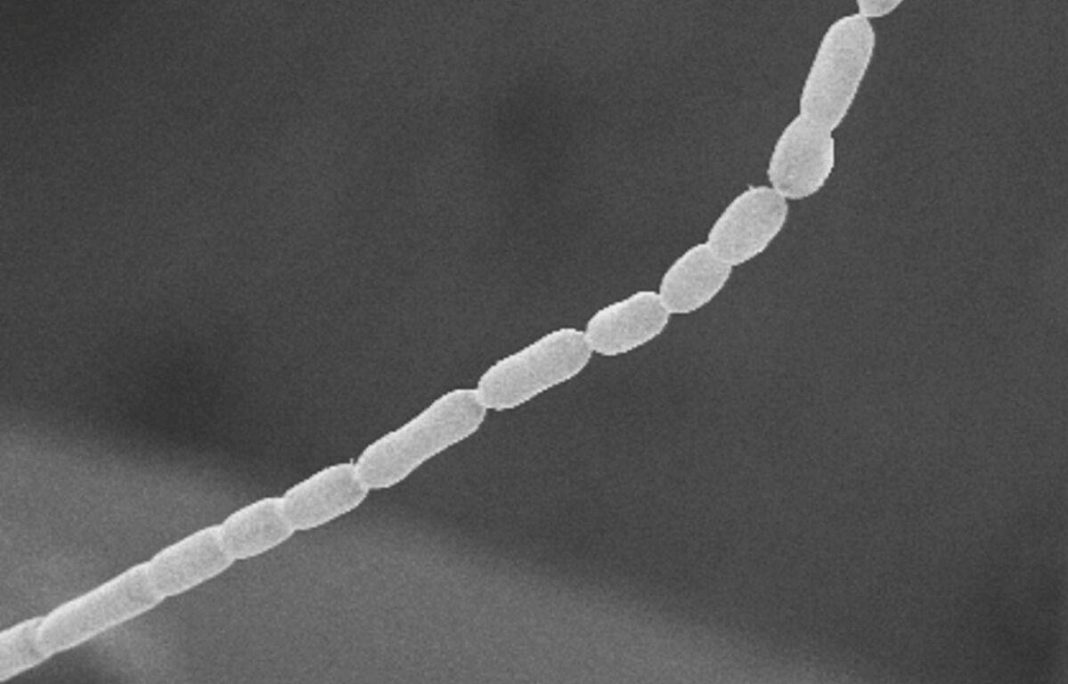An unprecedented discovery. It can be picked up with tweezers: The world’s largest bacteria, 5,000 times larger than its peers and much more complex in structure, has been discovered in Guadeloupe, according to a study published Thursday in the journal. Sciences.
‘Thiomargarita magnifica’ measures up to two centimeters, looks like an ‘blink’ and rocks microbiology codes, described to AFP Olivier Gross, professor of biology at the University of the West Indies, co-author of the study.
Spotted in 2009
In his laboratory on the Fouillole campus, in Pointe-à-Pitre, the researcher proudly displays a test tube containing tiny white threads. When the average size of the bacteria is 2 to 5 micrometers, “it can be seen with the naked eye, I can pick it up with tweezers!”, it is amazing.
A researcher first noticed the microbe in Guadeloupe, in 2009. “At first I thought it was nothing but a bacterium, because something two centimeters long couldn’t be one.” Very quickly, electron microscopy techniques show that it is nevertheless indeed a bacterial organism. But with this size, says Professor Gross, “we had no confirmation that it was a single cell” – bacteria are a single-celled microorganism.
A biologist from the same lab reveals that it belongs to the family Thiomargarita, an already known bacterial genus that uses sulfides in evolution. Professor Gross explains that work by a researcher at the National Center for Scientific Research in Paris indicates that we are dealing with “one cell and the same cell”.
As tall as Mount Everest
Convinced of their discovery, the team attempted to publish for the first time in a scientific journal, but that failed. The biologist recalls: “We were told: It is interesting but we lack the information to make us believe you,” and the evidence is not strong enough in terms of photographs.
Enter Jean-Marie Voland, a young postdoctoral student from the University of the West Indies, who will become the first author of the study published in Sciences. After not obtaining a research position in Guadeloupe, the 30-year-old traveled to the United States, where he was recruited by the University of Berkeley. When he left there, he was thinking of studying the “amazing bacteria” he was already familiar with. “It would be like meeting a human the size of Mount Everest,” he said to himself. In the fall of 2018, he received his first package that Professor Gross sent to the Lawrence Berkeley National Laboratory’s Genome Sequencing Institute, which is operated by the university.
The challenge was mainly technical: to succeed in presenting an image of the bacteria as a whole, thanks to “3D microscopic analyses, at higher magnification”. In the American laboratory, the researcher possessed advanced technologies. Without forgetting the significant financial support and “access to researchers who are experts in genome sequencing,” the scientist admits, describing this US-Guadeloupe collaboration as a “success story.” His 3D images finally make it possible to prove that the entire thread is indeed a single cell.
Microbiology disorder
In addition to their “giantness”, bacteria also turned out to be “more complex” than their counterparts: a “completely unexpected” discovery, which “somewhat turns the knowledge of microbiology upside down,” the researcher testifies. “While bacteria are present, the DNA usually floats freely in the cell, in which case it is compressed into tiny structures called dots, a type of small, membrane-enclosed sac that isolates the DNA from the rest of the cell. The cell develops.” Jean Marie Foland.
This division of DNA – the carrying molecule of genetic information – is “a characteristic of human, animal, and plant cells…and not at all bacteria”. Future research should determine whether these properties are specific to Thiomargarita magnifica or if they are present in other types of bacteria, according to Olivier Gros.
“This bacterial giant calls into question many established rules of microbiology” and “provides us the opportunity to observe and understand how complexity arises in living bacteria,” Jean-Marie Volland is excited.

“Unapologetic pop culture trailblazer. Freelance troublemaker. Food guru. Alcohol fanatic. Gamer. Explorer. Thinker.”




